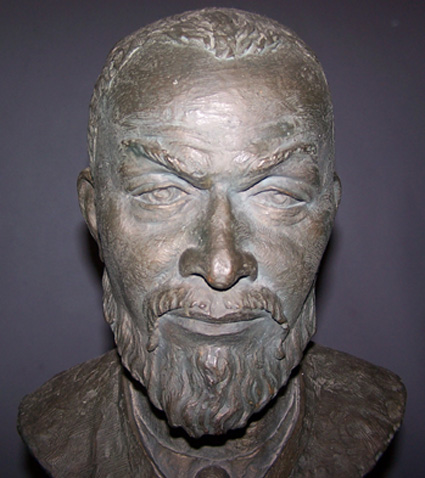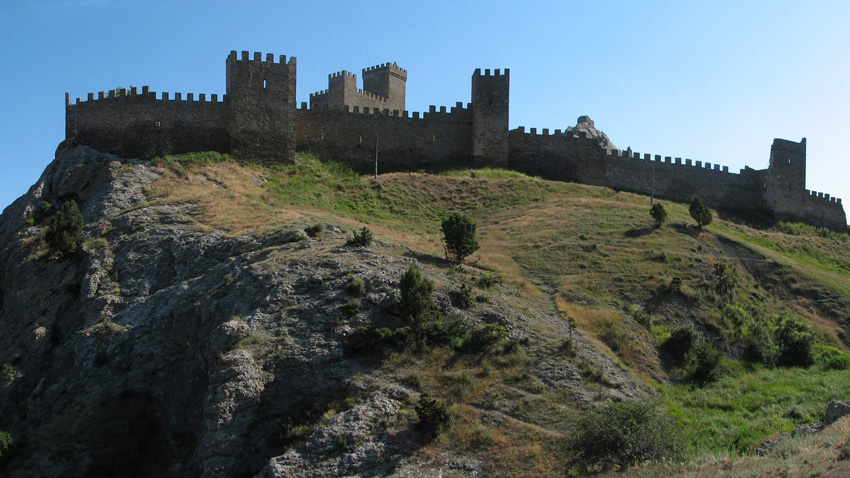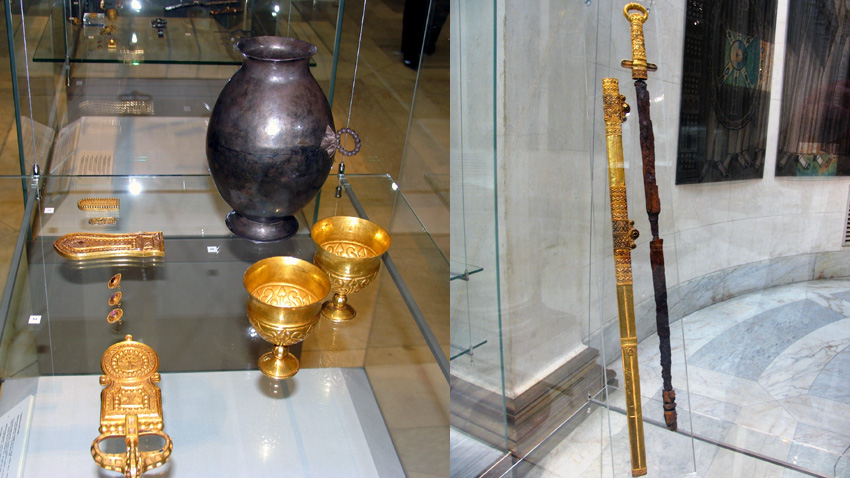The Bulgarian Mecca – the most sacred place for all Bulgarians can be found in Ukraine. This is the grave of Khan Kubrat – the only grave of a Bulgarian ruler that has been fully proven and recognized. More than 1350 years ago the khan saw through that Unification Means Power. It has been engraved on the black marble stone up his mound. Furthermore: Kubrat the Great, placed by God, ruler of Old Great Bulgaria. The capital of the ancient country can be found next to Crimea – Phanagoria. So, in fact Crimea is part of the Bulgarian historical homeland.
 More than 300 proto-Bulgarian settlements blossomed on the peninsula in the period 7 – 10 c. AD. There were many Bulgarian migrations over the centuries. Nowadays three Crimean regions use primarily the Bulgarian language.
More than 300 proto-Bulgarian settlements blossomed on the peninsula in the period 7 – 10 c. AD. There were many Bulgarian migrations over the centuries. Nowadays three Crimean regions use primarily the Bulgarian language.
“The place used to be part of Khan Kubrat’s Old Great Bulgaria as early as the 7th century,” says in an interview for RB Prof. Nikolay Ovcharov. “When the country fell apart under the attacks of the Khazars, one of the sons – Khan Asparukh, established Danube Bulgaria; the second son – Khan Kotrag established Volga Bulgaria, while the rest of the lands were ruled by the first son – Batbayan. Ukrainian scientists from Crimea talk about some 300 Bulgarian settlements that existed in the period 7 – 9c. AD. That was the so-called Saltovo-Mayaki culture that showed much of a resemblance to the first capital of Danube Bulgaria – Pliska, in Northeast Bulgaria. The second Bulgarian trace comes later, during the 19th century, when quite serious migrations of Bulgarians to the Crimean Peninsula were registered. Later those people faced an unhappy destiny after the October Revolution, as they were mostly wealthy people, which turned into a reason for their deportation to Siberia.”
The internal turmoil within the Ottoman Empire in the beginning of the 19th century forced the Bulgarians to look for a new refuge, attracted by the economic eases, provided by the Russian tzar. During the regime of Stalin the Bulgarians were deported to Siberia and Middle Asia. In 1944, following an order of Beria, Russian authorities deported about 13,000 out of Crimea in the course of few hours only. Those were accused of cooperation with the Germans. The reason was that officially Bulgaria was an ally of Germany during WWII. The Bulgarian community was scattered at six places, including Kazakhstan, Uzbekistan and Turkmenistan. That was a true genocide, many of the deported died on their way to the new destinations. Their native Bulgarian language was banned and a part of them was assimilated. Crimean Tatars had their chance to return barely after the 1989 democratic changes. Few of them used the opportunity, but their houses had already been taken by Turkish, Ukrainian and Tatar people. Thus whole Bulgarian villages ceased their existence.

Nowadays Bulgarians live mainly in the cities – Simferopol, Sudak and Koktebel. One of the old Bulgarian fortresses can be found in Sudak. Prof. Ovcharov explains that the first Bulgarian fortresses were built up as early as the 7th century by the proto-Bulgarians.
“According to Ukrainian archaeologists there was a proto-Bulgarian settlement at this spot. Bricklaying signs testify on this, identical to the ones, discovered in the capitals of the First Bulgarian Empire – Pliska and Preslav. Identical ceramic vessels have been found too. This is the Saltovo-Mayaki culture from the 7 – 9c. AD, which carried the traditions of Old Great Bulgaria.”
Some sources say the town of Phanagoria near Crimea used to be the capital of Old Great Bulgaria in the period 632 – 668 AD. In the 10th century the town was conquered by Kievan Rus’ and was never restored again. The image of the Phanagoria proto-Bulgarian settlement can be seen in Varna nowadays, in an open outdoor museum – a replica of a proto-Bulgaria military camp with wooden walls and towers, with yurts, workshops and restored ancient costumes and weaponry… As far as the grave of Khan Kubrat is concerned, it was discovered purely accidentally by two little shepherds from the village of Malaya Pereshchepina in 1912. The two came upon a treasure of gold and silver, weighing 70 kg. Today it can be seen at the Hermitage. Christian symbols can be seen on the rings, sword and the wand of Kubrat. The gold buckle shows that Kubrat used to have a patrician title, as engraved in the ring. Kubrat had been baptized during his studies in Constantinople.

Otherwise, the best Crimean cognac is produced in the town of Koktebel. All vineyards in the area are cultivated by Bulgarians. The head of Crimea’s church – metropolitan Climent is also of a Bulgarian origin.
English version: Zhivko Stanchev
One frosty November morning in 1917, as World War I was raging, a Zeppelin L 59 took off from the air base near Yambol bound for Tanzania. The purpose of the flight was to deliver ammunition and materials to the German military units in a remote..
October 27 marks the 165th anniversary of the birth of Academician Aleksandar Teodorov-Balan, who was the first theorist of the Bulgarian literary language, phonetics and grammar. He was born was born in 1859 in the village of Kubey, Bessarabia...
Over 150 exhibits from 14 Bulgarian museums will take part in an exhibition entitled "Ancient Thrace and the Classical World" . The exposition will be opened on November 3 at t he Getty Museum in Los Angeles and will continue until March 3, 2025...

+359 2 9336 661
